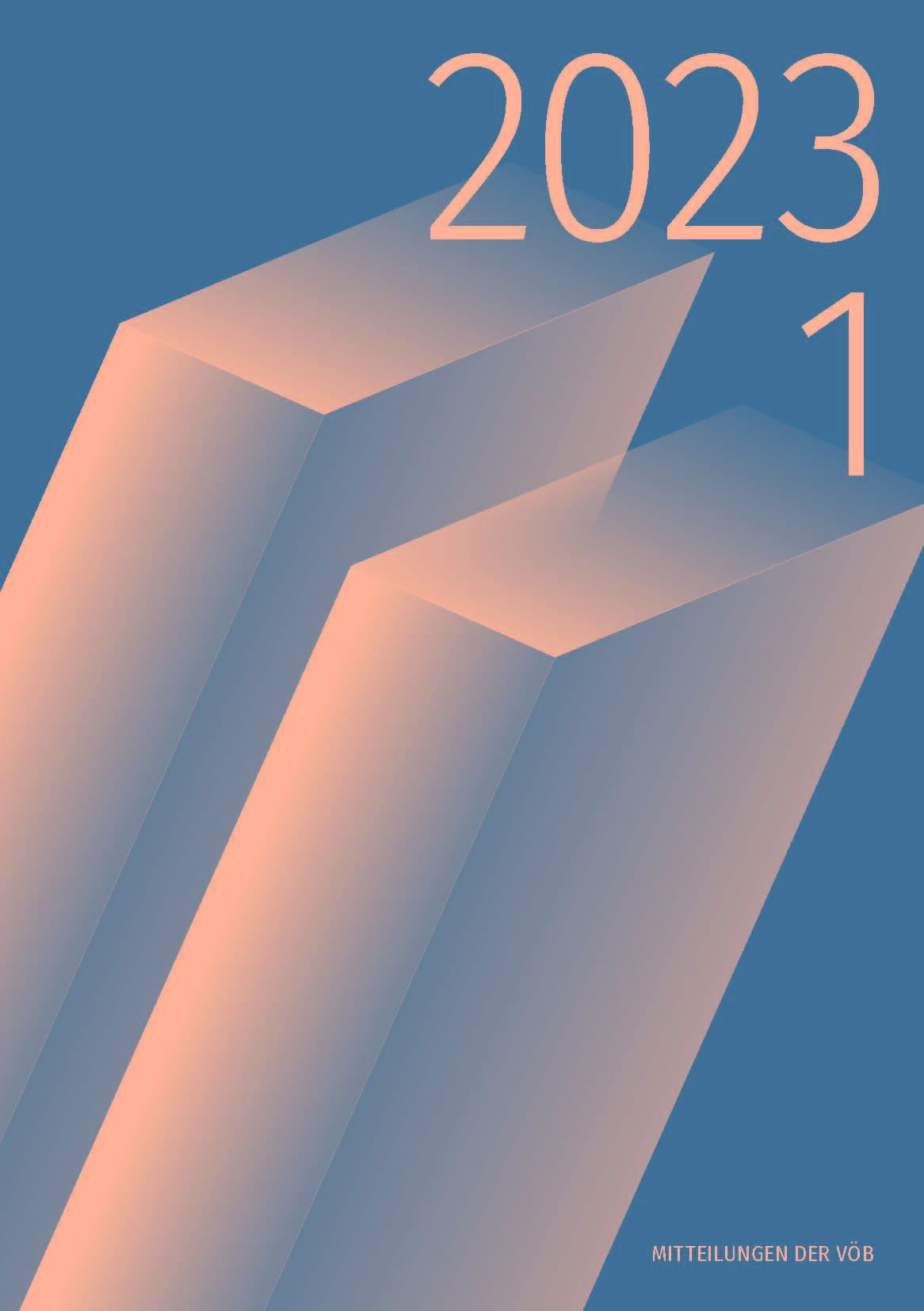Verschiedene Bedürfnisse, verschiedene Lösungen: Wie Schulungen von Bibliotheken barrierefrei gestaltet werden können
DOI:
https://doi.org/10.31263/voebm.v76i1.8220Schlagworte:
Barrierefreiheit, Bibliotheken, Schulungen, Schulungsmaterialien, FAIRe Daten, Open ScienceAbstract
Bibliotheken als Wissenszentren erfüllen mehrere Funktionen, eine davon ist die Verbreitung von Wissen. Die Schulungen, die zur Erreichung dieses Ziels benötigt werden, müssen für ein vielfältiges Publikum geeignet sein. In diesem Artikel wird erörtert, warum die Erstellung barrierefreier Schulungsmaterialien wichtig ist, und es werden Leitlinien und Hilfsmittel für die Erstellung barrierefreier Schulungsmaterialien präsentiert.
Downloads
Literaturhinweise
BVG (2022), https://www.ris.bka.gv.at/GeltendeFassung.wxe?Abfrage=Bundesnormen&Gesetzesnummer=10000138 [accessed 11.01.2023].
Caldwell, B., Cooper, M., Guarino Reid, L., & Vanderheiden, G. (2008): Web Content Accessibility Guidelines (WCAG) 2.0, http://www.w3.org/TR/WCAG20/.
EOSC (n.d): EOSC. What the European Open Science Cloud is, https://eosc.eu/about-eosc.
EOSC Synergy (n.d): EOSC Synergy Online Training Handbook, Creating Inclusive Content, https://moodle.learn.eosc-synergy.eu/course/view.php?id=15§ion=20 [accessed 11.01.2023].
European Union, Directive (EU) 2016/2102 of the European Parliament and of the Council of 26 October 2016 on the accessibility of the websites and mobile applications of public sector bodies, https://eur-lex.europa.eu/eli/dir/2016/2102/oj.
Gergely, E., Jeitler, A., & Blumesberger, S. (2022): FAIRe Daten sind barrierefrei, https://hdl.handle.net/11353/10.1604426.
Glover Blackwell, A. (2017): The Curb-Cut Effect. Stanford Social Innovation Review, https://ssir.org/articles/entry/the_curb_cut_effect# [accessed 11.01.2023].
GO FAIR (n.d): FAIR Principles, https://www.go-fair.org/fair-principles/ [accessed 11.01.2023].
Jaeger, P. T. (2018): Designing for diversity and designing for disability: New opportunities for libraries to expand their support and advocacy for people with disabilities. International Journal of Information, Diversity, & Inclusion, 2(1-2), 3430. https://doi.org/10.33137/ijidi.v2i1/2.32211.
Pionke, J. J. (2020): Library employee views of disability and accessibility. Journal of Library Administration, 60(2), 120–145, https://doi.org/10.1080/01930826.2019.1704560.
Pionke, J. J. (2017): Toward holistic accessibility: Narratives from functionally diverse patrons. Reference and User Services Quarterly, 57(1), 48–56, https://doi.org/10.5860/rusq.57.1.6442.
Russell, S. E., & Huang, J. (2009): Libraries’ role in equalizing access to information. Library Management, 30(1/2), 69-76, https://doi.org/10.1108/01435120910927538.
Ryobi Systems (2020): Visolve, https://www.ryobi.co.jp/products/visolve/en/ [accessed 11.01.2023].
Shea, G., & Derry, S. (2019): Academic libraries and autism spectrum disorder: What do we know? Journal of Academic Librarianship, 45(4), 326–331, https://doi.org/10.1016/j.acalib.2019.04.007.
United Nations (2014): UN E-Government Survey 2014, https://publicadministration.un.org/egovkb/en-us/reports/un-e-government-survey-2014
Downloads
Veröffentlicht
Zitationsvorschlag
Ausgabe
Rubrik
Lizenz
Copyright (c) 2023 Lisa Hirsch, Julia Geistberger

Dieses Werk steht unter der Lizenz Creative Commons Namensnennung 4.0 International.

Alle Inhalte dieser Zeitschrift – exkl. einzelner Logos und Abbildungen – sind lizenziert unter CC BY 4.0.










